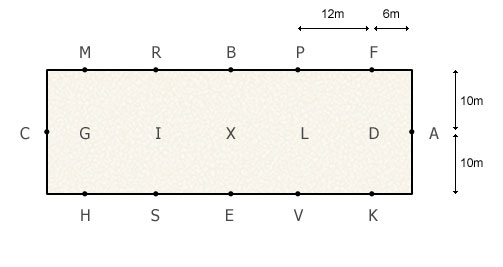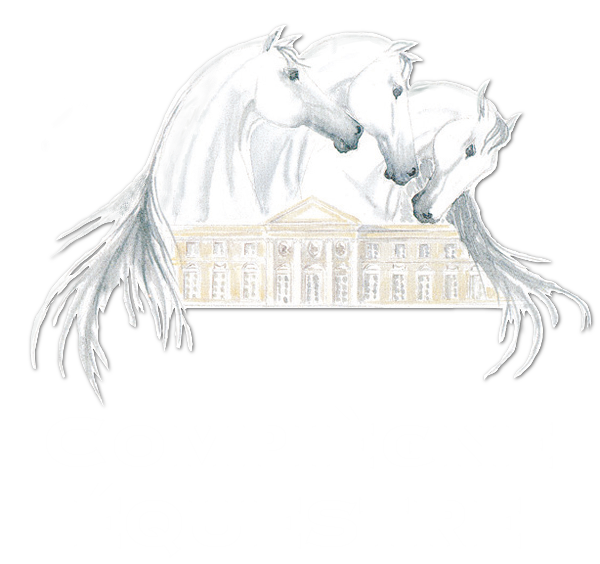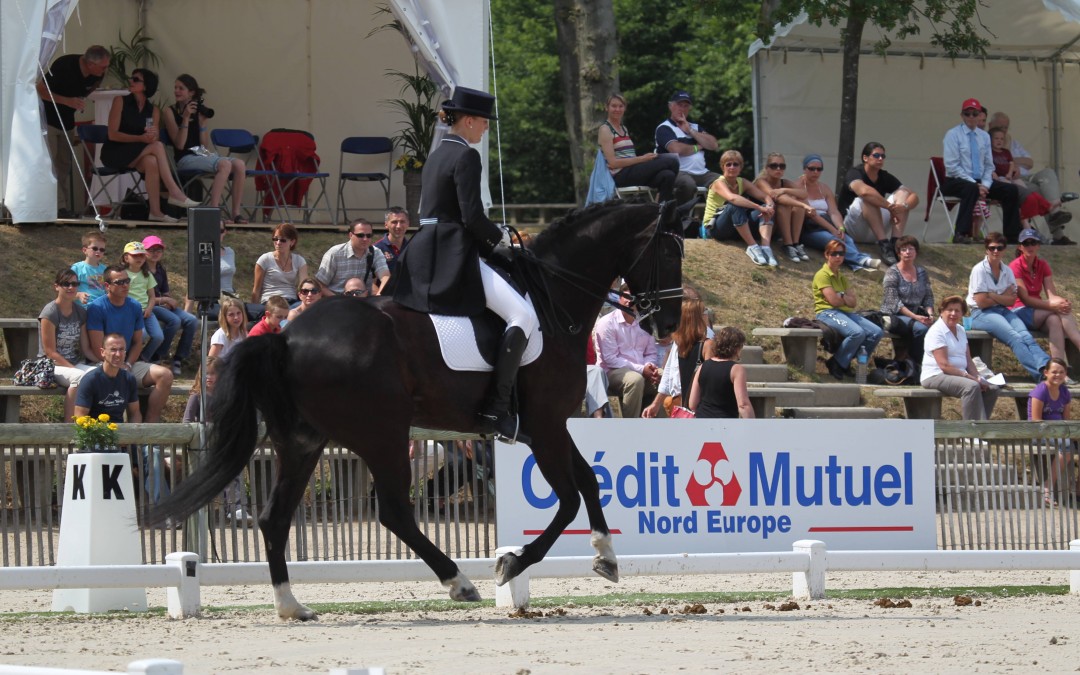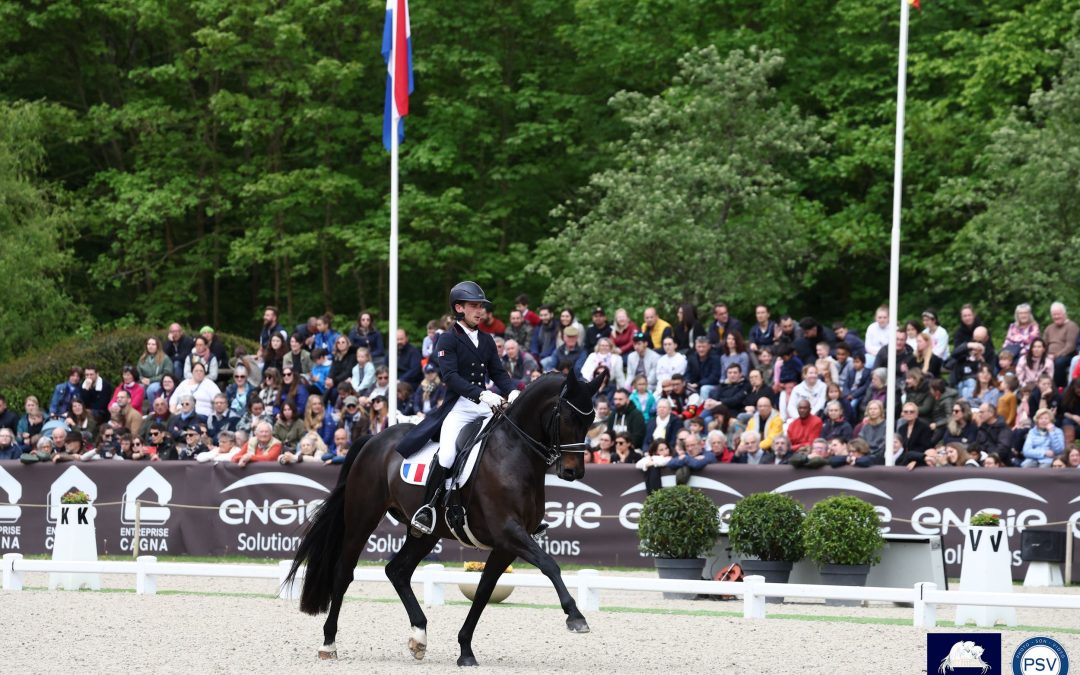Along with eventing and jumping, dressage is one of three equestrian Olympic disciplines.
Dressage is considered the basis of all equestrian practice.
It allows one to assess the osmosis that exists between rider and mount.
It is certainly the most highly specialized of all the equestrian sports.
Parameters of the competition
The horse and rider perform within a 60m x 20m rectangular space and then have to execute a series of twenty compulsory figures or free figures known as reprise.

These figures are performed at a specific spot at the pace required. To help the rider keep his or her bearings and perform the figures at the right time, letters are placed around the course.
Judging and scoring
Required and free reprise routines are evaluated by a jury composed of five (sometimes three) judges qualified by the French Equestrian Federation. Each team is scored throughout the reprise according to the base qualities expected in the exhibition of movements in compliance with the requirements of the international federation:
- Pace correction (step, trot, gallop)
- Flexibility, relaxation, contact, attitude, …
- The quality of the performance of each of the various movements (rests, extensions, foot changes, pirouettes, etc.),
and also:
- Impulsion, which is the expression and quality of balance (composure) that allows the team to reach the highest scores.
- The rider is also judged according to his or her ease, and the effect of his or her prompts.
In “Free” reprise routines, the scoring of various movements is accompanied by artistic scoring focused specifically on:
- Choreography,
- Degree of difficulty
- Choice of music and musical interpretation.
Scores assigned range from 1 to 10 per figure, and some might be weighted depending on the level of difficulty. Half points for artistic performance are allowed. Results are listed in percentages. Teams with the strongest results come in first.
Find out more
Dressage is considered to be more of an art than a sport because of how much the aesthetic perfection of movement predominates.
In fact, everything tends toward perfection, even the immaculate outfit of the dressage rider who sports a tail-coat and top-hat at the most prestigious events.
You can’t really describe the discipline of dressage without mentioning the “Musical” free reprises, which are the most beloved by audiences. They allow riders to express themselves freely against a musical backdrop, making them a delicious blend of harmony and grace embodying both the high stakes of competition and the finesse of the technical performance.
What is a circuit?
The Amateur circuit
The amateur circuit offers challenges that are preparatory for the national circuit, and they are open to amateurs as well as young riders.
Two leading events: Amateur Elite GP, Amateur 1 Freestyle
The national circuit
They are also called “minor tour” or “preparatory circuit”. While the difficulties resemble those in the Grand Prix, the combinations are nevertheless at an easier level.
Four leading events: Pro 2 Preliminary, Pro 2 Grand Prix, Amateur Elite Freestyle, Pro 2 Freestyle
The international circuit
Also called “Grand Tour”, this circuit presents all the challenge categories and technical difficulties that professionals encounter during international competition and in tournaments.
Three leading events: Pro 1 Grand Prix, Pro Elite Grand Prix Preliminary, Pro Elite Freestyle
Dressage events
Grand Prix challenges
These are the challenges with the highest degree of difficulty on each index. Events that generate points.
Preliminary events
These are challenges at a difficulty level right below the Grand Prix. These events generate ranking points.
Compulsory events
Compulsory events prepare teams for the difficulties they will need to contend with in Preliminaries and at the Grand Prix.
Preparatory events
All Dressage events, whether Grand Prix, Preliminary, or Compulsory can be Preparatory. In such a case, they are opened to all rider divisions without qualification limitations. These events do not generate ranking points and ranks obtained in these events are not taken into account if a team’s participation is disallowed.
Freestyle events
Freestyle reprise set to music is an artistic equestrian event. Freestyle events include three paces. They give competitors complete freedom in composing their program. Movements of a technical level higher than indexed are not allowed.






